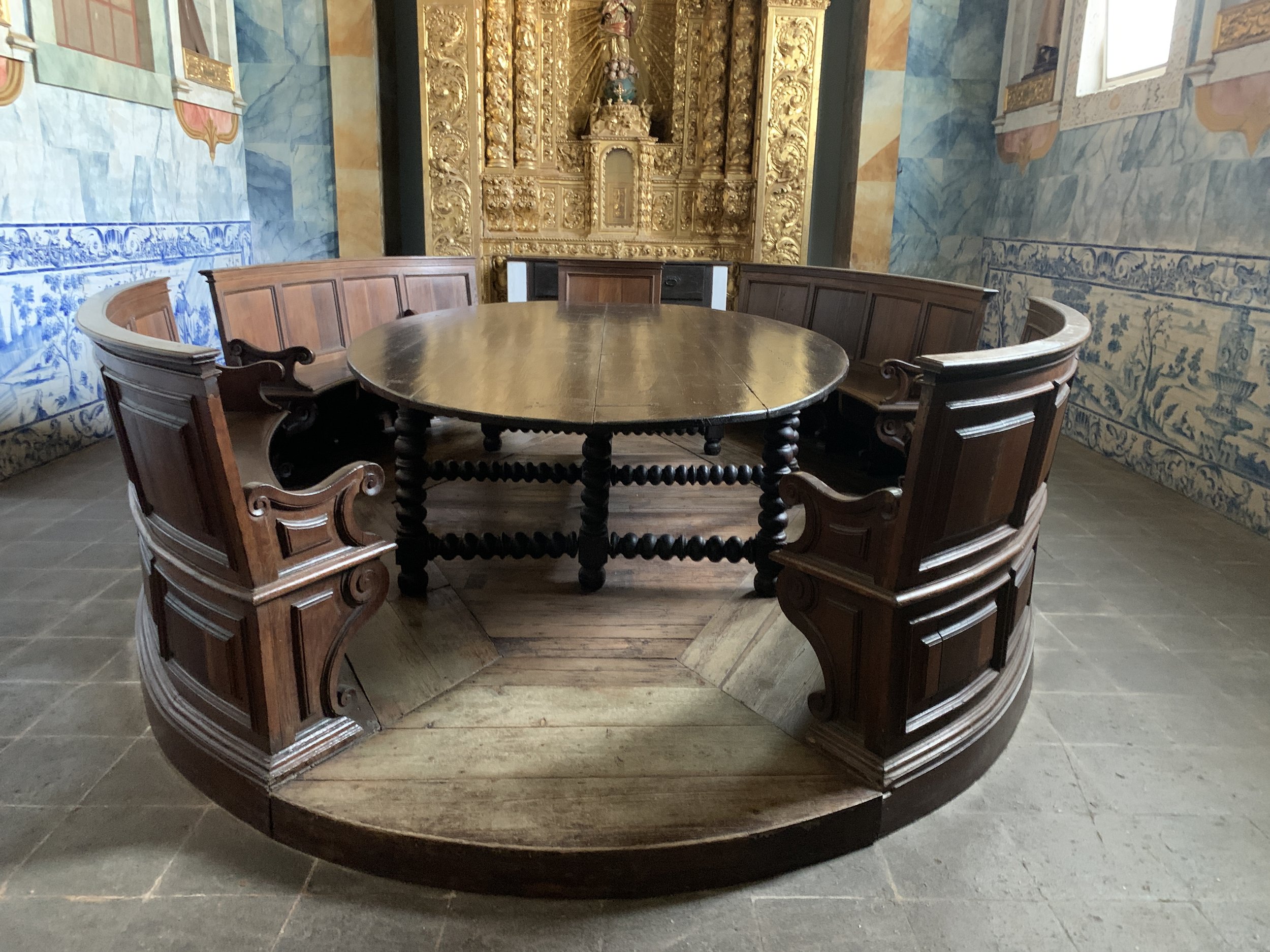1) I was ready when Luis, today’s Nice Man with a Car, called for me at 9:15 to drive me diagonally all the way through Portugal from Coimbra to Vila Real de Santo Antonio (VRSA).
1a) Adeus, Coimbra! I will probably not be back — your stairs are so very steep — but you have given me so much of your somber beauty, and I am grateful.
2) We left Coimbra in a bit of rain, and the weather varied on our drive to Évora. In some ways this part of Portugal is like a hillier version of Southwest Louisiana, but with added eucalyptus. And goats. At one point I was very surprised to see a small flock of goats.
3) Luis and I separated on arrival in Évora, by arrangement, and I had time for lunch before my afternoon guide appeared. Not far from the ruined temple of Diana was an enoteca where I had a very good lunch and a very good glass of wine, so it was all right.
3a) Sitting right by the door I got a very good look at the backsides of anyone else trying to get a table.
4) On schedule I returned to find Nuno waiting to show me the sights of Évora. He and I made good conversation throughout the afternoon, taking in two churches, a museum, coffee and pastries, and subtle retail encouragement.
The cathedral roof, with some total stranger striking a pose.
4a) First we went to the Sé Évora, the cathedral. Nuno bantered a bit with the lady at the ticket counter, and we then began to mount the 110 or so steps up. The last 41 are up a good old-fashioned medieval corkscrew staircase wide enough for one. To help with traffic, the management installed a stoplight over the door. Ours was red so long Nuno finally said “It doesn’t always work,” called out “Coming up!” in Portuguese, and I (and people behind us) continued our climb. And whaddya know, the roof was empty when we got there.
4b) I don’t know what I expected — a tower? — but we came out onto the open roof of the cathedral, which was also not flat. Whereupon my acrophobia kicked in, and I began the downward journey in good order. En route I told Nuno about my tour of Sacré Coeur in Paris back in 2011.
The Last Supper.
4c) The church itself and its cloister are quite beautiful in an austere way. The sanctuary reminded me some of the Escorial. Of special note was a painting of the Last Supper.
4d) After coffee and excellent pastry, the Church of St. Francis commanded our attention. While its beautiful side chapels all had their charms, the most unique detail was the oval conference table and its surrounding pews in the chapter room. Nothing said “There is no room for you at this table” more — a real closed society.
"No room! No room!"
4e) Next door the famous Chapel of Bones (of which I had never heard) was the big attraction. And it is exactly that: a chapel lined and decorated with human bones. I could just imagine the workmen sorting out the patterns for decorating: “No, I have enough femurs. We need more skulls!” The ceiling frescos in bright colors, lined with more skulls, added a macabre note.
4f) Then the adjacent museum, but I was able to breeze past the 600 different nativity scenes from around the world (but Mother would have loved it).
Évora Pride.
4g) I did see a Pride flag flying from one storefront, so there’s that.
5) But eventually it was time to go, and Luis and I got back on the road shortly before 5 PM. The further southeast we drove, the more the daylight faded to dusk, and then to night.
6) What I remember most about arriving in VRSA was driving by a lighthouse. But then arriving at the hotel, its lobby was lit by tall candles stacked on the sides of the interior stairs, among decorative stacks of old books - quite a charming image!
6a) Before going to my top floor room I was given a tour of the public rooms of the hotel, including a back terrace on my floor. This hotel has actual keys on green silk tassels for room keys, not magnetic cards!
7) After a shower and a change of clothes, I went down to the small hotel dining room, all white walls and dark walnut paneling and blue-and-white linens, for a nice little dinner of pork something followed by “chocolate textures,” the whole washed down with two manhattans.
The Sé Évora seen from its choir loft.






